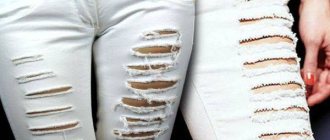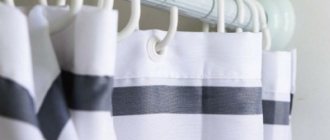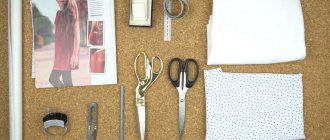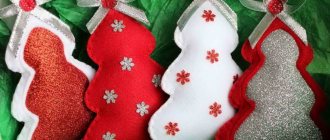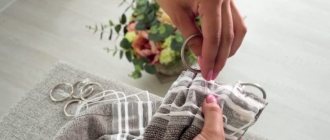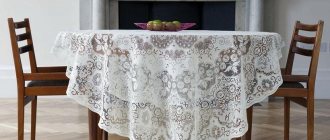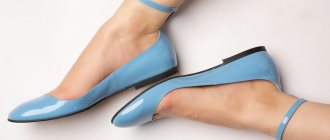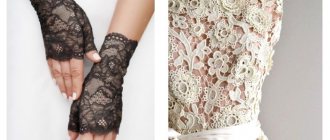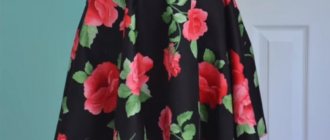If you want to give a dress, blouse, or skirt a romantic look, find out how to sew lace onto clothes. Openwork inserts are appropriate on products in any style. Even business clothes can be decorated with lace. Suits with such trim do not look too revealing. They only add tenderness and femininity to the image.
Lace trim has become a fashion trend for 2021. For decoration use:
- guipure;
- sewing;
- Richelieu;
- needle and linen lace;
- fillet on a grid;
- Chantilly;
- cord lace.
Openwork fabric can be sewn on when assembling the product, but this can also be done on ready-made factory clothing that you purchased in a store and did not make yourself. By following technology, it is easy to achieve the desired result. Such decor will become an exquisite decoration, giving the item integrity.
Secrets of sewing lace
Dresses and blouses decorated with lace look airy and certainly attract the eye. However, sewing openwork lace onto products is not so easy. If you do this work, do it with the utmost care and precision, because the first glance of every person you meet falls on the lace.
By following the advice of experienced craftswomen, you will do this job correctly:
- Wash the linen because it can shrink and tighten the fabric. To preserve the relief, lay it “face down” on a soft surface and go over it with an iron. You can simply iron it with a steamer.
- When sewing the decoration simply to the fabric, place it overlapping the edge of the fabric, baste it, and sew it on a zigzag machine. Always match the threads to the tone of the openwork.
- If you are making lace gathers, then first make them on the lace, then baste them to the product and sew them on a machine with a zigzag seam.
- You can make folds on the lace ribbon. Choose a base with an alternating pattern, lay out the pleats according to the pattern, baste, and then machine sew.
How to sew lace elements together:
- Take the base with a reserve, then cut out the design along the contour.
- Place one piece on top of the other so that the pattern on one piece matches the other.
- Fasten with needles in different places, baste along the entire contour, and then sew with a zigzag. You can do it manually, since the stitching area will be small.
Ideal companions
Today, lace is commonly used not only as an addition to fine fabrics. It is more common to see such trim on silk dresses and chiffon blouses. Properly selected, it harmoniously complements products made from thick suiting fabrics. This way you can decorate: a jacket, vest, skirt, blazer. Get ideas for inspiration from the photos presented.
Lace looks ideal on products made from:
- jeans;
- knitwear;
- suit and dress fabrics.
Every dressmaker should learn how to sew lace onto clothing pieces. Even a needlewoman without experience can decorate any item.
How to lengthen a dress
The fashion for lace trim lasts for more than one season. If you are tired of a dress, then decorate it with sewing. You can also lengthen the product.
On a note!
To make the finish look especially beautiful, the fabrics must match in color or be contrasting. For a floral dress, choose decorative patterns to match one of the colors of the item's fabric.
You can sew to the hem in two ways:
- Openwork fabric is applied over the hem.
- The hem is sewn on top of the decor.
The openwork tape is cut with a margin (1-2 cm) to connect the parts. In the first case, lace is placed on the front side of the hem and a basting stitch is laid. A machine stitch is placed along the edge of the pattern.
In the second case, the openwork is applied to the bottom of the hem from the wrong side.
If you need to lengthen the dress, then choose a wide ribbon.
The lace fabric looks beautiful.
Decor options from Provence to classics
- Provence. A combination of lace medallions with ribbons of lilac, lilac, lavender colors. Tablecloths are often plain, combining several shades of the same color.
- Baroque. Feel free to choose lace with gold threads or dark, bright ones.
- Country. A kitchen in this style does not imply a riot of color. A tablecloth made of coarse unbleached linen or burlap is trimmed with white lace inserts or valances.
- Vintage. Did you manage to get your hands on some “grandmother’s” lace, such as antique cutwork or fillet crochet? These elements on the tablecloth will give a special look to your kitchen.
- Classic. Light lace along the overhang of the tablecloth. Strict lines, geometric patterns. The classic style attracts with its purity of image.
Sew openwork ribbon to the skirt
You can also adapt the ribbon to the skirt in two ways: on top of the hem and on the wrong side of the fabric.
Contrasting lace looks original.
The algorithm looks like this:
- Finish the bottom of the skirt with an overlocker, attach the openwork, and sew it on with a machine.
- Cut off the excess and process the cut with a zigzag.
- With knitwear it is better to do without a machine. Sew on a ribbon with a figured edge by hand, decorate the junction with the hem with beads, rhinestones, and thin braid.
Sew the decoration to the neckline. The easiest way is to find a sewing pattern that can be easily rounded. Place it along the neckline, pin it and sew it to the edge.
Tips before sewing
- To prevent the lace from shrinking after the first wash, rinse it in hot water before starting.
- After rinsing, place the fabric, wrong side up, on a flat, soft surface (for example, a sofa). Let it dry for 5-10 minutes and then iron it. This technique helps preserve the relief of the openwork material.
- If you plan to sew lace without gathers or flounces, fix the edge of the openwork fabric by hand basting or overlapping the edge of the dress with pins, only then start machine stitching so that the fabric does not move.
- It is best to sew lace materials with a zigzag stitch so that the fabric does not tear during wear, but only stretches slightly. This technique is especially important when creating folds or drapery.
- You can buy threads in a lace color. With a contrasting idea and the lining sewing method, it is recommended to match them to the base of the dress.
- To correctly calculate the amount of material required, lay the dress on the floor and measure the bottom line. Double the number and add 2-3 cm to the seams on each side. This is the required quantity to purchase.
- It is customary to sew figured lace versions not by machine, but by hand.
tkani-textiliya.ru
Decorating clothes with lace
Any clothing can be updated if you decorate it with a piece of openwork. How to sew to shorts:
- Cut out a piece of decor, completely preserving the design.
- Make a slit or cut a piece of fabric along the side seam of the shorts.
- Attach a piece of decor, pin it in different places, and lay a basting stitch.
- Iron with a steam iron.
- Sew on a machine.
Decorate your blue jeans with white lace yourself. You will not buy such a beautiful thing in any store. In this case, the lace fabric must be placed from the inside out, then stitched along the entire perimeter.
On a note!
You can stitch the trim to the sleeves anywhere: along the bottom of the sleeve, along the shoulders, along the sleeve, in a word, as your imagination dictates. The procedure is the same as for the hem of the dress.
Contrasting trim on the sleeve will update and decorate any dress.
Updating a top or T-shirt with patterned fabric is easy. First, make folds on the lace ribbon, then sew it to the top.
- The folds can be ordinary, which go in one direction.
- Counter, when the canvas is folded towards each other.
- Bow ones. The material is also rolled up on both sides, but only in the opposite direction from each other.
If you fasten together several types of openwork material and sew it to a blouse, the product will take on a more elegant look.
How to create lace decor for decorating T-shirts, T-shirts, tops
To decorate knitted T-shirts and tops, you can use ready-made decor that is sold in handicraft stores or create it yourself.
Openwork color options
A simple jumper can be easily decorated by pinning an openwork brooch made of guipure or tulle on the chest. It’s easy to make: gather a narrow strip of lace on one side, then pull it off - you’ll get a flower. Give it an attractive look with sewn beads and seed beads.
Lace appliques
Fabric stores sell many ready-made lace appliqués. It is enough to carefully sew them to the T-shirt or use adhesive interlining. If desired, you can sew beads and sequins onto the applique.
Applications are easy to make with your own hands. Needlewomen who know how to crochet can easily knit openwork flowers, butterflies, and even make large lace elements with their own hands. Spectacular details can be made using the macrame technique.
Embroidery with elements of openwork flowers
Nowadays, hand embroidery is in fashion: individual elements on T-shirts and T-shirts are embroidered with a cross or satin stitch. “Aerobatics” - cutwork embroidery. Once upon a time, our grandmothers used this technique to embroider (“embroider,” as they said) tablecloths and napkins, pillowcases and duvet covers. Now you can decorate a knitted T-shirt or blouse with such inserts.
Application
Guipure is used mainly for sewing elegant clothes. Since this material is translucent, dresses and blouses are sewn on a cover. But dresses with guipure inserts are no less popular. Such outfits are elegant, elegant and seductive. To combine with guipure, different fabrics are used, most often satin, velvet, chiffon, silk.
Photos from fashion catwalks make it clear that the use of guipure to decorate evening, wedding and even everyday dresses is often used by designers. Any fashionista can afford such dresses, regardless of age and physique. You just need to choose the right style and color of the outfit.
How to decorate a skirt - the most beautiful and original ideas in 75 photos!
Every woman keeps on the back shelf of her closet things that are small, large or out of fashion, but may one day come in handy.
It is often not easy to correct a figure; it can take a lot of time, effort, and nerves, but making new-fangled ones out of outdated things is not so difficult!
So, we will talk about decorating skirts and altering them.
What to combine with?
The choice of accessories is determined by the purpose of the ensemble. To create a casual look based on a dress with guipure inserts, you should choose classic shoes or sandals and a rectangular clutch.
Guipure goes perfectly with various hats, so if you choose a beautiful hat with your dress, you will get a cute and feminine retro look. It would be nice to wear a vintage brooch with this outfit.
If a fashionista decides to wear a dress with guipure inserts in the cold season, then she will need to choose a trapezoid-shaped coat to go with it. The best shoe option is classic boots or feminine ankle boots. You can create a shocking look by combining a dress with guipure inserts with a leather jacket and army-style boots.
For an evening out, dresses with guipure inserts can be complemented with an airy stole, and in winter - with a fur cape. Shoes you need to choose are classic ones - stiletto heels. There shouldn’t be a lot of decorations, but they can be massive.
Selection of material and product model
The process of making a dress begins with the choice of fabric. The range of colors of guipure is amazing. It is used as the main fabric.
Dresses made of guipure are sewn with a lining, which is chosen so that the lace pattern is clearly visible. It should be darker, lighter or a contrasting color. Use satin, satin or silk.
The model is chosen to have a simple design so that darts and seams do not disturb the design. If guipure is not elastic, fitted silhouettes will not work.
Color spectrum
The classic solution is a black dress with guipure inserts. Black color is universal, it suits almost everyone and is suitable for any situation, allowing you to combine severity and playfulness. In addition, any accessories look incredibly impressive against the background of a black dress.
A bright dress with guipure inserts is perfect for a party or attending a theater premiere. The outfit can be red, blue, emerald or golden.
Dresses in pastel shades, decorated with guipure inserts, are an excellent choice for a daytime celebration or a walk around the city. Brides traditionally choose dresses with white lace.
Most often, guipure inserts are of the same shade as the main fabric. But sometimes the inserts are made in a contrasting color. Using this technique, you can correctly place accents and visually correct your figure.
Execution Features
At the moment, only a few methods are known from masters on how to sew lace to fabric and how it can be sewn on in general. The braid can be cut into one lace layer, or in several layers. You can also sew the ribbon to the bottom of the product, place it on the neckline, or hide the base of the ribbon under part of the hem. As an addition, there may be such an interesting idea: applying lace decor in a fold or overlap. In addition, you can create assemblies or attach several inserts to specific hem areas.
Lace hem as a decorative option
Under the hem
To place the decor under the hem, it is necessary to carry out all sewing work from the inside out. To do this, you need to turn the dress inside out and place it on a hard table. Next, place the lace on one side of the product and secure it with pins. Do the same with the other side. Then sew on the ribbon using a sewing machine, removing the pins in advance. Sewing can be done with a zigzag or a long straight stitch. If you wish, you can try to sew all the parts by hand using some unusual stitch.
History of fabric
The name of the fabric comes from the French language, the word can be translated as “air openwork”. The fabric is a type of lace with a convex through pattern.
Guipure was first produced in the 16th century and its homeland is Venice. At first, this material was produced in the form of braid, used to decorate outfits; later, the fabric began to be produced in the form of a single piece.
Nowadays, the production of guipure is automated; machines make patterns according to the program entered into them. To make guipure, natural (cotton, silk) or synthetic threads are used. There are several options for guipure on sale:
- Classic . Delicate and beautiful fabric, used for sewing and decorating clothes.
- Metallic . Made with the addition of shiny threads, the fabric has a characteristic shine.
- Net . The thinnest type of guipure, the material is almost transparent.
- Elastic . The fabric is made with the addition of elastic threads, so it has excellent stretch; this option is great for making inserts on dresses or blouses.
Sewing
Now let's talk about sewing itself. You can sew seams on lace or lace fabric using a sewing machine or overlocker, and in some cases, by hand. An overlock stitch is used on an overlocker, while a straight or zigzag stitch is used on a machine. We recommend trying it on a small piece of your material and choosing the most suitable method.
Seam allowances can be finished with bias tape.
If you are sewing from elastic lace fabric, the shoulder seam must be additionally reinforced. It is best to use cotton bias tape for this.
The neckline is decorated with a strip of knitted mesh, stitched with lace braid, elastic braid or ribbon, or bias tape. Sometimes the neckline is overlocked with an overlocker and, folded inside out, stitched.
Recommendations
Many users recommend choosing high-quality material. It will depend on him whether the dress can maintain its attractiveness for many years or not. You should definitely give preference to materials with already processed edges that do not have hanging ribbons.
Choosing quality material as basic advice
If the edges of the product are not processed, this must be done, since lace products, and especially dresses, have the ability to have holes and climb. This is especially true for fabrics of synthetic rather than natural origin.
Proper processing is the key to creating a beautiful product
Of course, when performing any work, you should follow the instructions. If you have chosen a model from a textbook, then you should not show independence at first with your familiarity with openwork decor.
Note! The instructions must be followed completely. Then you can create a product that will not only have a beautiful appearance, but also maintain this appearance for a long time.
If the decision has been made to process the edges of the dress in some unusual way or to make an entire hem out of lace, then the key to success in the undertaking will be good ironing before darts and decoration. For example, this will be especially useful if the lace strip is placed on the outfit in a triangle or other shape.
It is also worth remembering that before decorating, the lace must be decatified. To do this, the tape must be wetted and dried naturally. A steam generator unit will help make the work easier. Such actions will help avoid rapid shrinkage.
There is no need to stretch the lace fabric at the time of sewing. Then the material can be made unevenly or spoil the hem of the outfit, and an unsightly fold is added.
Ironing the product before final sewing as a tip
The textured edge must be sewn on by hand. To decorate the edge, you need to put the sewing machine aside and start working by hand. It is important to pay attention to the threads. If the ribbon goes under the hem, you need to match it to the dress.
Note! The lace insert can be used not only to decorate the dress. They can significantly change the appearance of a product with its length. Decorating the hem can be done independently, without using special skills and spending minimal personal time.
Overall, decorating the hem of a dress with lace is a great idea. All you need is to choose the right material, based on the criteria of quality and strength. Next, you can decorate it under the hem, on top of the dress, or in several layers. There is an option to make the hem out of lace. As for useful tips, every novice needlewoman should know that the quality of the sewn product and its service life will depend only on the quality of the material and the correctness of its processing.
Varieties
Guipure can be used to cut out various details of a dress. This fabric is used for small inserts or individual elements of the outfit are completely cut out of it.
Lace top
Outfits with a bodice made of guipure and skirts made of a different material look gentle and feminine. Of course, to make the outfit look decent, the bodice is made of two layers: the top layer is cut out of openwork guipure, and the bottom layer is made of thick fabric.
Guipure is often used to make individual parts of the bodice. For example, a classic solution is a dress with a guipure insert in the front. Such an insert is appropriate even in business clothes, provided that the insert is not transparent. In this case, the guipure is simply applied to the front piece, cut from the main fabric.
Evening dresses with lace inserts on the back look impressive. In fact, this is a more modest version of outrageous outfits with an open back. Not all fashionistas decide to wear a dress with a deep neckline in the back, since only those with perfect skin can wear such an outfit. If your back is covered with freckles or there are visible marks on your skin from the straps of a swimsuit, then it is better to choose a dress in which the neckline is completely covered with translucent guipure. It looks no less impressive, but allows you to hide imperfections.
Another option for placing lace inserts is on the sides. Such inserts can be present in both a fitted and a one-piece dress. If you use guipure for inserts, which is darker than the main fabric of the dress, then a dress with guipure inserts on the sides will help visually adjust the silhouette, giving it a seductive outline. This outfit option is recommended for girls who do not have a defined waist.
Sleeves
Lace sleeves are a classic solution that is often used in evening and wedding fashion. This solution is great for overweight girls, as well as for overly thin fashionistas, as it allows you to hide the not very attractive upper part of the arms.
Guipure sleeves are usually sewn narrow, fitting the arm. They don't have to be long; the most popular length is three-quarters or elbow length.
If a girl has too thin arms, then lace sleeves can be made puffy and flared.
Often the lace sleeves extend into the lace top of the dress. This solution is especially recommended for fashionistas with a pear-shaped body type. It will visually expand the shoulder line.
Uncover
Let's say a few words about cutting lace and lace fabric.
If you are sewing from material with a large pattern, lay out the patterns in full, without folding the fabric in half. This way you can correctly position the pattern on the future product. A thin lace fabric with a small repeating pattern can be cut as usual by folding the fabric in half.
The direction of the grain thread on the lace can be ignored, but it must be made the same for the front and back parts, as well as both sleeves.
Place the main fragments of the pattern symmetrically with respect to the center of the product.
Try to match the pattern in the connecting seams of the model.
If the edges of your material are scalloped, place them along the bottom or neckline of the dress, or the edge of the sleeves. In this case, the pattern is placed without taking into account allowances for hems or facings.
Fashionable styles
The creation of a harmonious appearance begins with the selection of a suitable style. Currently, sophistication and romanticism are returning to fashion. Moreover, notes of grace and coquetry are present even in the office wardrobe. A black skirt with lace at the bottom is quite suitable for an office wardrobe. The current style is pencil or trapezoid. Of course, the look should not be oversaturated with auxiliary elements in a business style.
The photo shows a wide variety of styles that beauties demonstrate at a young age. But this does not mean that older women should give up such skirts: by wisely choosing a complete wardrobe, you will be able to create a suitable look.
A popular new item is a lined pencil skirt that reaches to the knee or longer. Moreover, the shades vary, inviting fashionistas to try on white, red, crimson, green, gray and black skirt models. The most versatile option is a pencil skirt with lace at the bottom, demonstrating the individuality and tenderness of its owner. Dense fabric combined with openwork will create the effect of lightness.
If you want minimalism and elegant shades, especially in the summer, use long models. A circle skirt with floor-length lace at the bottom will allow you to embody a boho or romantic style. “Sun” can be floor length, medium length or mini. Particularly popular is the fluffy pattern with a non-standard cut in the shape of an eight-piece. Most couturiers use the patchwork technique, which allows them to form an intricate relief pattern. Models such as “half-sun” and tutus are more suitable for young ladies.
It is appropriate to choose any colors, but in summer blue, coral and snow-white are more popular, and in autumn it is advisable to use wine, brown and green shades. In addition to the “sun” and “half-sun”, ladies choose multi-tiered frills, flared hems and classic styles with a side slit. The larger the hem, the more transparency is acceptable.

